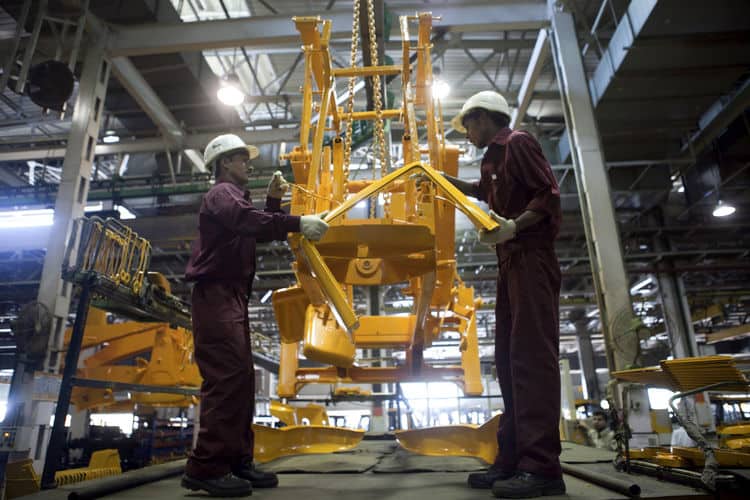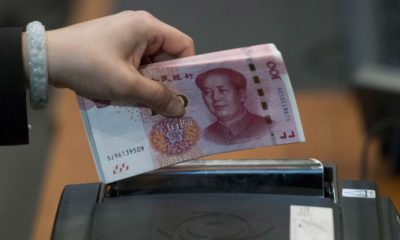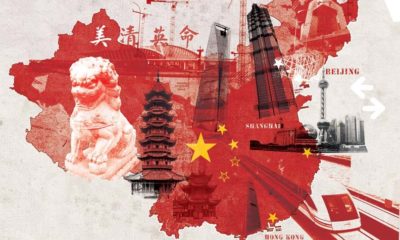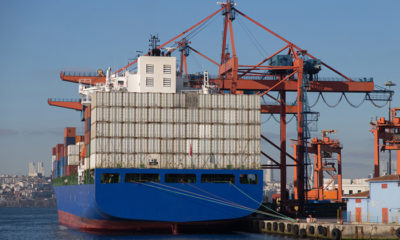- China Caixin manufacturing PMI Climbs to 51.9 in December
The China Caixin manufacturing Purchasing Managers’ Index (PMI) climbed in December, marking its fastest rate of improvement in three years, figures released Tuesday showed.
In December, the Caixin PMI reading came in at 51.9, up from November’s 50.9. A reading above 50 indicates expansion, while a reading below signals contraction.
That compared with China’s official manufacturing PMI, released Sunday, coming in at 51.4, down slightly from November’s 51.7.
The official non-manufacturing PMI, which takes a reading on the services sector, came in at 54.5 in December, down from November’s 54.7.
The official figures tend to focus on larger companies, while the private Caixin data focus on smaller and medium-sized firms.
The data likely indicated that the mainland economy, which had been expected to slow, was stabilizing.
“A further rise in production at Chinese manufacturers supported the higher PMI reading in December. Notably, the rate of output growth accelerated to a 71-month high, with a number of panelists commenting on stronger underlying demand and new client wins,” the Caixin data statement said.
“Data indicated that improved domestic demand was the key driver of new business growth, however, as new export sales were unchanged in December.”
While the manufacturing PMI data tends to be more closely watched, China’s pivot toward domestic consumption and away from manufacturing- and investment-led growth means the service sector, which includes consumer industries such as real estate, retail and leisure, has become the majority of the mainland economy. It is also a key barometer of consumption, accounting for more than 50 percent of gross domestic product (GDP).
Concerns have persisted over the mainland economy’s health, as private-sector debt has surged even as the amount of growth from additional debt has declined.
But the economy in recent months has received a fillip from a pickup in the property sector.
The surprise win by U.S. President-elect Donald Trump has also been a concern for the mainland’s export-oriented economy.
On the campaign trail, Trump repeatedly accused China of manipulating its currency in order to give its exports an advantage over U.S.-made goods, and he threatened to slap a tariff of up to 45 percent on Chinese imports.
On Tuesday, he upped the ante on anti-China rhetoric, saying via Twitter that “China has been taking out massive amounts of money & wealth from the U.S. in totally one-sided trade, but won’t help with North Korea. Nice.”
But the latest Caixin data showed that the new export orders index was at the neutral 50.0 level, with 90 percent of the survey’s respondents saying there was no change in new business from overseas.
“A number of panelists commented on relatively muted foreign demand in the latest survey period,” the survey statement said.
But it wasn’t clear how sustainable the manufacturing pickup might be.
Dr. Zhengsheng Zhong, director of macroeconomic analysis at research firm CEBM, said in the Caixin statement that the mainland’s manufacturing economy continued to improve, but he added, “it is still to be seen if the stabilization of the economy is consolidated due to uncertainties in whether restocking and consumer price rises can be sustainable.”
Other economists were also doubtful of the sustainability of the pick up.
Andy Xie, an independent economist and former managing director at Morgan Stanley, told CNBC’s “Squawk Box” on Tuesday that he wasn’t optimistic the bump up could be sustained.
“Industrial production has been on an upswing for about six months or so, mainly because of the surge in property sales last year. Property developers and local governments got money and they’ve been spending the money,” he said, noting that for the past several years, every economic cycle has been driven by the property market.
“It usually doesn’t last very long,” he said.


 Billionaire Watch3 weeks ago
Billionaire Watch3 weeks ago
 Startups4 weeks ago
Startups4 weeks ago
 News4 weeks ago
News4 weeks ago
 News4 weeks ago
News4 weeks ago
 Bitcoin4 weeks ago
Bitcoin4 weeks ago
 Naira4 weeks ago
Naira4 weeks ago
 Forex3 weeks ago
Forex3 weeks ago
 Treasury Bills4 weeks ago
Treasury Bills4 weeks ago






















